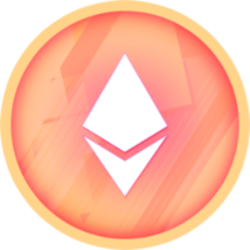|
thisCrowd - Audio Read
Getting your Trinity Audio player ready...
|
One platform has emerged as a true trailblazer, offering an exceptional blend of speed, scalability, and innovation. Join us on an exploration of Solana‘s extraordinary journey, from its inception to the challenges it faces, as it establishes itself as a prominent player in the digital domain.
Pioneering Scalability
In 2017, Anatoly Yakovenko, a visionary rooted in Qualcomm, embarked on a mission to redefine blockchain scalability. Solana’s inception was not merely a response to technological challenges but a proactive endeavor to push the boundaries of what blockchains could achieve while maintaining cost-effectiveness.
SOL Token and Singular Layer Design
The architectural brilliance of Solana unfolded during the 2017 ICO boom, presenting a hybrid model that deviates from the multi-layered strategies of Ethereum. At its core lies SOL, the native cryptocurrency introduced in March 2020. SOL not only facilitates value transfer but also acts as the cornerstone for securing the blockchain through staking.
Proof of History and Stake
Solana’s protocol intricately weaves two avant-garde consensus mechanisms: proof of history and proof of stake. The former, resembling a cryptographic clock, meticulously timestamps each transaction, while the latter ensures consensus, security, and transaction validation. This harmonious blend eliminates the need for cumbersome validation processes, contributing to Solana’s exceptional throughput and swift block creation.
Innovative Scalability
Solana’s unique approach to scalability orchestrates a ballet of innovation. Unlike traditional solutions reliant on Layer 2 interventions, Solana introduces a proof-of-stake mechanism that designates a solitary “leader node” responsible for orchestrating and sequencing transactions. This elegant choreography minimizes network strain, ushering in a realm of faster transactions. However, amidst triumphs, Solana grapples with challenges related to potential centralization, stemming from the substantial computing demands on validators.
Yakovenko’s Inspirations
Anatoly Yakovenko’s journey, from surfing the waves of Solana Beach to envisioning a revolutionary blockchain, draws inspiration from his tenure as a computer engineer. The genesis of Solana finds roots in Yakovenko’s experimentation with time division multiple access and the application of verifiable delay functions. Launched in March 2020, Solana emerged not just as a platform but as a hyper-optimized smart contract haven, attracting developers seeking a convergence of speed and unique optimization.
Lessons from Challenges
Solana’s ascendancy is marked by moments of trial and growth. The collapse of FTX cryptocurrency exchange and intermittent network outages served as crucibles for learning. Yakovenko emphasizes the paramount importance of safety and liveness, acknowledging the meticulous development, audits, and testing required to fortify the network. These challenges spurred the Solana Foundation to assemble a dedicated team tasked with crafting a second validator client, a pivotal step towards achieving full decentralization.
Future Horizons
As Solana continues its metamorphosis, a narrative of collaboration emerges. Open-source developers from Solana and Ethereum engage in a harmonious dance of ideas, fostering innovation in a shared space. Solana’s strides toward complete decentralization manifest in the construction of a second validator client, showcasing a commitment to sustainability in the long run.
Conclusion
In conclusion, Solana’s odyssey from inspiration to blockchain mastery unfolds as a unique tapestry of ingenuity, scalability, and resilience. Navigating uncharted waters, Solana stands as a beacon in the dynamic landscape of blockchain innovation, offering a glimpse into a future where speed, scalability, and decentralization seamlessly converge.















































